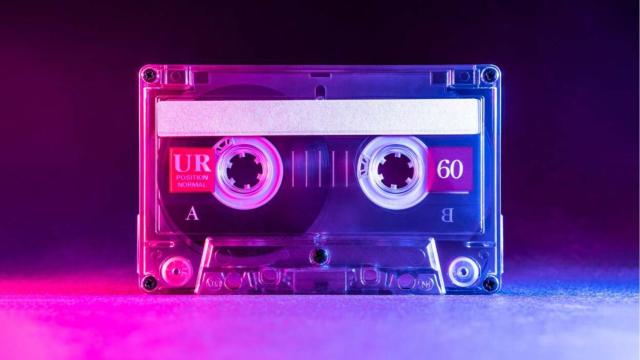Anyone else miss mixtapes and mix CDs? Those custom-made, carefully curated pieces of physical media that you could share with other people in an attempt to expand their musical horizons? Amid the switch to first digital and then streaming music, crafting the perfect mixtape has become a lost tradition.
As the film High Fidelity explained so well, a mixtape can be used to subtly express your feelings to someone you’ve got romantic feelings for—but I used to push them on friends, family, and just about anyone who I thought might benefit from my eclectic, wide-ranging musical taste (which, in my own inflated opinion, I was rather proud of).
And they were so much fun to assemble. Thoughtfully choosing artists and tracks, refining the order, thinking about how the recipient would experience it, and using all kinds of tricks along the way—like choosing a cover version of a song instead of the original, which offered the added bonus of introducing two bands in one slot.
The ultimate reward was introducing someone to—and seeing them fall in love with—a band I loved. It worked both ways: I got a lot of mixtapes back in return, mixtapes that introduced me to artists that I still listen to today. It was an age of getting your recommendations from real people, rather than algorithms.
In 2024, of course, sharing playlists is a breeze—you can do it in any music streaming app with a couple of taps. However, some of the magic is admittedly lost without the physical media aspect, not to mention the effort of making the recording. With those caveats in mind, if you want to make a modern day mixtape, these are your best options, and the ones I turn to.
Create a YouTube playlist

The benefit of the YouTube playlist approach is that these playlists work just about everywhere, on any device, and can be accessed without a subscription to any music streaming service. As an added bonus, YouTube offers a whole host of music—rarities, live versions, b-sides—you won’t find anywhere else.
To get started, head to YouTube on the web, and find one of the tracks you want to include. Click Save under the video (you might need to click the three dots to see the option), then select Create a new playlist. Give it a name and make it Unlisted; this means it’ll come with a shareable link that someone else can view, but it won’t show up in YouTube searches.
Continue to add more tracks in the same way. (Another reason I like creating YouTube playlists is that I can drop in the occasional bit of movie dialog or music snippets, if needed—assuming they’re on YouTube or you’re able to upload them to your own channel. You can really get creative about what’s included.)
To find your playlist, select it under the You heading in the left-hand navigation pane (click the three horizontal lines, top left, if you can’t see it). From here, you can change the order of tracks by dragging the handles on the left. Click the three dots on the right for more options, including deleting tracks and setting the playlist thumbnail.
YouTube will helpfully offer recommendations for your playlist if you’re stuck for inspiration. When you’re satisfied with your work, click the Share button on the left to generate a link to send to someone else. If you really want to impress, you can get an embed code that you use to drop your playlist anywhere on the web.
Create a Spotify playlist code

As I noted, every music streaming service has its own share playlist feature, and they usually aren’t hard to find. You can simply use this link to share a modern day mixtape with someone, assuming you both subscribe to the same service. But Spotify’s playlist sharing feature is a bit more interesting, incorporating a QR code-style system.
They’re more like sound waves than digital barcodes, but the idea is the same: You get a visual code that can be scanned to bring up a playlist. That means you can share it physically, perhaps in a card or a letter, giving you something more tangible to offer than a link sent over email or via text.
Ie’ll give you the instructions for the Spotify desktop apps, but you can do this on the web and in the mobile apps too. To start, in the left-hand navigation pane, click + (plus) next to Your Library, then Create a new playlist. Click on its name to give it a title, then click the three dots underneath and make sure it’s set as public so you can share it.
To add new songs to the playlist, click the three dots next to any track in the Spotify desktop app, then choose Add to playlist and choose your mixtape playlist. Back on the playlist itself (you’ll find it in the left-hand sidebar), you can rearrange songs by dragging and dropping them into place, and remove them via the three dots on the right. Click the playlist thumbnail, and you can drop in your own cover image, which is neat.
To generate the Spotify code, click the three dots under the playlist title, then Share to get a playlist link or an embed code (to put the playlist somewhere on the web). That playlist URL can then be pasted into the Spotify Codes site to get your graphic, to be downloaded to use anywhere you like.
If you’re doing this on mobile, open the playlist, then tap the three dots (on iOS, the code is shown right away, and on Android you need to choose Show Spotify Code.)

Leave a Reply
You must be logged in to post a comment.